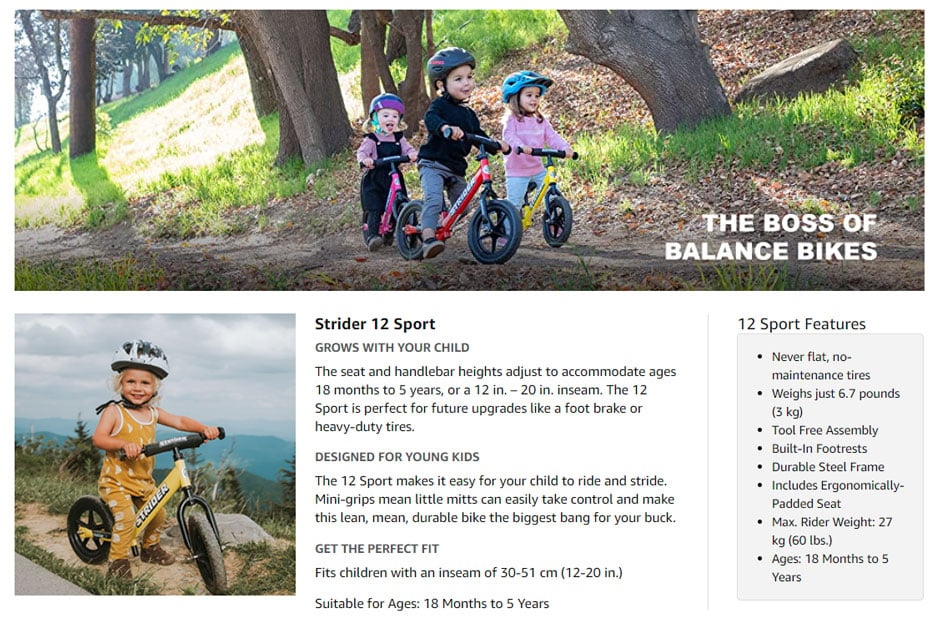Originally published on May 30, 2023, updated November 7, 2024
Menu
Join Our Email List
- Receive our monthly newsletter.
- Stay up to date on Amazon policies.
- Get tips to grow your business.
What's the difference between building a brand vs. building a product? eCommerce expert and Amazon vendor David T. Griffith shares examples of brand vs. product marketing in this guest article for the eComEngine blog.
Differentiating between building a brand vs. building a product can be a complex task, easily leading to confusion. For example, Q-tips® are often used interchangeably with any cotton swab, but did you know there are alternative brands in the market? While Q-tips are solely produced by Unilever, it's important to recognize that there are actually a wide variety of cotton swabs available.
Q-tips is a prime example of a trademarked name that has become ubiquitous with a particular category of products. Its name was coined in 1926, three years after its invention, and since then, competitors have been vying for their slice of the market share. However, this brand has been so successful that other cotton swabs are often misidentified as Q-tips, making them a household name.
This sort of example lays the groundwork for understanding the differences between brands and products. We live in a confusing world where brands and products are being marketed to us from every direction in multiple formats, both old and new: billboards, television, magazines, webpages, web videos, radio, and so on.
In this article, we'll dig deeper into brand vs. product marketing and how it pertains to selling and advertising on Amazon.
You’ve likely heard some form of this adage about building a brand vs. building a product: a brand isn’t always a product, but a product is always a part of a brand.
I’ve heard it used in describing a food product like Taylor Pork Roll – colloquially known as Taylor Ham – which is a brand of pork roll popular in New Jersey but not often referred to by any other name. This is another example of a brand gaining more popularity over the product classification, like the Q-tips example from earlier.
Simply put, a brand is the identity of an entity, including all forms of its expression. The most central element of a brand is its trademarked name and brand logo. Along with the logo comes a defined color palette and typefaces used in all branded visuals. If appropriate, there may also be a strapline or slogan to accompany the brand name.
These established marks lay the foundation for a platform of authenticity from which a customer knows what you say about your brand and products to be accurate and true. They're basically a cornerstone in building customer trust and loyalty. No matter where in the world a customer is when they see your brand, they will immediately feel a sense of familiarity and reliability.
Branding encompasses numerous facets, which you can identify in almost any manufactured item, physical location, or service, including:
When it comes to your eCommerce product listings, you're probably wondering this: how can branding make an impact on my Amazon product page?
 Naming conventions are a critical first step in product branding, and every product listing on Amazon begins with a name. Consider the product’s official trademarked name in the marketplace and whether it's part of a collection or stands alone.
Naming conventions are a critical first step in product branding, and every product listing on Amazon begins with a name. Consider the product’s official trademarked name in the marketplace and whether it's part of a collection or stands alone.
To build trust with potential customers, it's crucial to keep a consistent message across all channels of product communication. This means trying to promote your product through content including blog creation, email marketing, social media, and more. From the name of the brand to the features highlighted, every element must match up so that customers know they're getting exactly what they saw elsewhere.
Related reading: Strategies for Building Global Brand Recognition on Amazon
When creating product titles, it's essential to showcase both the parent brand and product line brand names, such as the iconic Apple® iPhone®. But it's not enough to stop there. The title must also provide relevant information that accurately describes the listing's featured item.
In these brand vs. product examples, the model, color, and storage capacity are immediately known: Apple iPhone 14 Plus, 256GB, Midnight. This is the branded product name, not to be confused with the parent brand name Apple and the product line brand name iPhone. Product naming conventions should be uniformly applied to all of your brand’s product listings to maintain brand consistency, such as Apple iPhone 12 Mini, 64GB, Black or Apple MacBook Pro, 15-inch Laptop, 256GB SSD, 8GB RAM, Silver.
Continue in Seller Central: Product Title Requirements
After carefully establishing your naming conventions, the next step is to craft your listing's bullet points. These features must adhere to Amazon's content guidelines while remaining true to your brand's established style. That means the same type of verbiage and detailed descriptions that might be found in a product’s announcement, or a magazine ad, are consistent with your bullets.
 Consistency is key when it comes to crafting bullet points for your different product pages, just like with your naming conventions. This means that the level of detail and the order in which the bullet points are presented should remain consistent, while also speaking directly to the unique features of each specific product.
Consistency is key when it comes to crafting bullet points for your different product pages, just like with your naming conventions. This means that the level of detail and the order in which the bullet points are presented should remain consistent, while also speaking directly to the unique features of each specific product.
Finally, product descriptions should again follow an equal level of brand consistency across your different products. Here, you have more room to elaborate on the product’s features and usages as they might apply to lifestyle or trade. For example, this lightweight UPF 50 jacket is both waterproof and wind-resistant, ideal for working outdoors during unpredictable weather.
Plus, it’s an opportunity to reiterate the parent brand and its values as they relate to the displayed product. For example, this jacket is made from 90% post-consumer recycled materials as part of our company’s commitment to improving the environment.
The primary product image is the very first impression customers have of your product. It's the image that pops up in search results, grabs attention in an Amazon brand store, and takes center stage at the top of a product detail page. Don't underestimate the impact of this visual element!
The product image, which also must follow Amazon’s style guidelines, is another opportunity for enhancing your branding. The method in which the product is photographed, including the lighting and angles, should have a consistent feel across your full catalog so it all feels like a family of products.
At the same time, the primary photo should heavily include the product’s most recognizable branded elements, such as a logo or the item's physical design. Additional product images, whether showing the product at different angles or the contents of the packaging, should follow the same photography standards.
Visuals on the product page can also include videos. Videos can be simple, such as a 360-degree rotation of the product, or far more elaborate, like a “how to” video or branded lifestyle video showing the product in use. In any case, the product’s brand as well as the parent brand should be displayed according to the type of video. Your “how to” and lifestyle videos should feature title cards at the beginning and end that show the trademarked names, logos, and other pertinent information.
Related reading: What is the Difference Between Branding and Positioning?
The same rules apply when you're adding A+ content to your listing. By utilizing enhanced content, you have the ability to expand upon the core features of your product and provide in-depth comparison tables to distinguish each model.

It's important to include additional product and lifestyle images to create a well-rounded branded experience.
As a vendor or seller on Amazon, you have plenty of opportunities to showcase your products and your brand. From Amazon's advertising platform to Posts, Brand Stores, shipping packages, and influencer collaborations, it's vital to infuse the same level of detail that was put into your branded product pages.
Consistency in brand names, logos, language, and visuals is key regardless of the promotional format.
How would you differentiate brand vs. product marketing? In short, building a brand focuses on creating a connection with consumers, while building a product focuses on developing a tangible item that meets a specific need or desire. While both are important for business success, building a brand is a long-term strategy that creates loyalty and drives customer engagement. Building a product is a short-term strategy that focuses on delivering functional benefits to consumers.
Here are three key takeaways to remember:
For more information on how to build a brand for a product, check out the video below!
Originally published on May 30, 2023, updated November 7, 2024
This post is accurate as of the date of publication. Some features and information may have changed due to product updates or Amazon policy changes.
These Stories on Business
14321 Winter Breeze Drive
Suite 121 Midlothian, VA 23113
Call us: 800-757-6840





Copyright© 2007-2025 eComEngine, LLC. All Rights Reserved. eComEngine®, FeedbackFive®, RestockPro®, and SellerPulse® are trademarks or registered trademarks of eComEngine, LLC. Amazon's trademark is used under license from Amazon.com, Inc. or its affiliates.
No Comments Yet
Let us know what you think